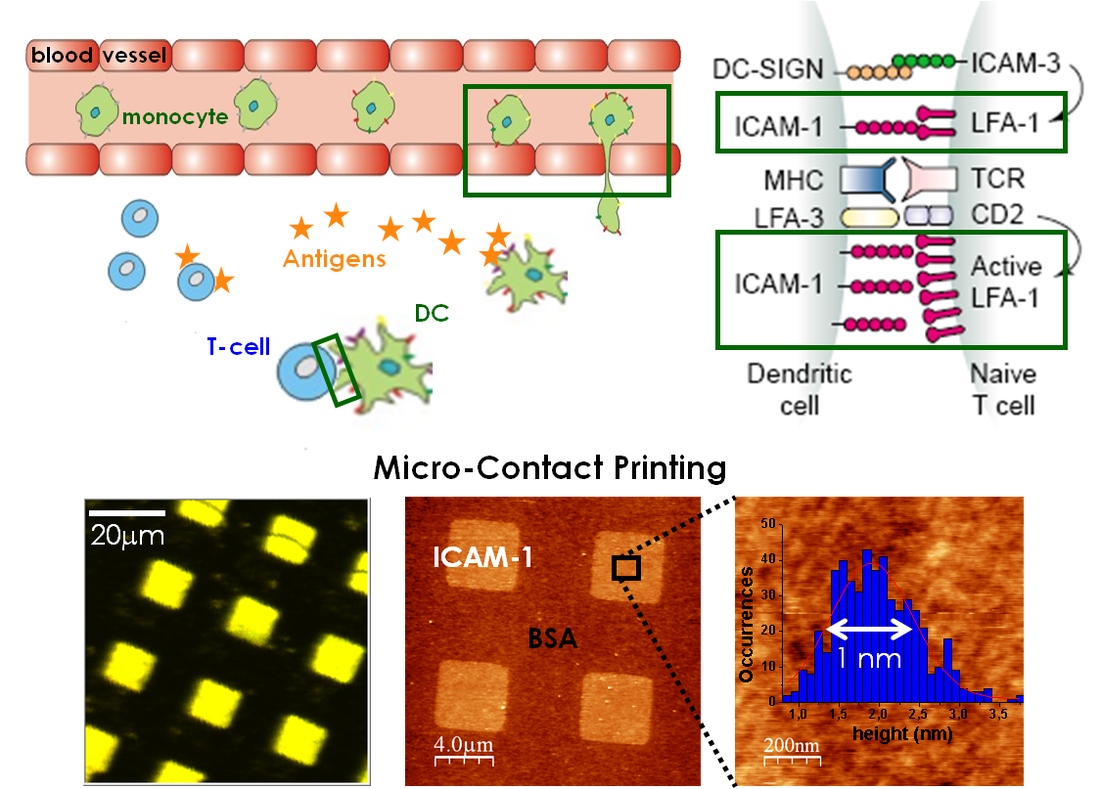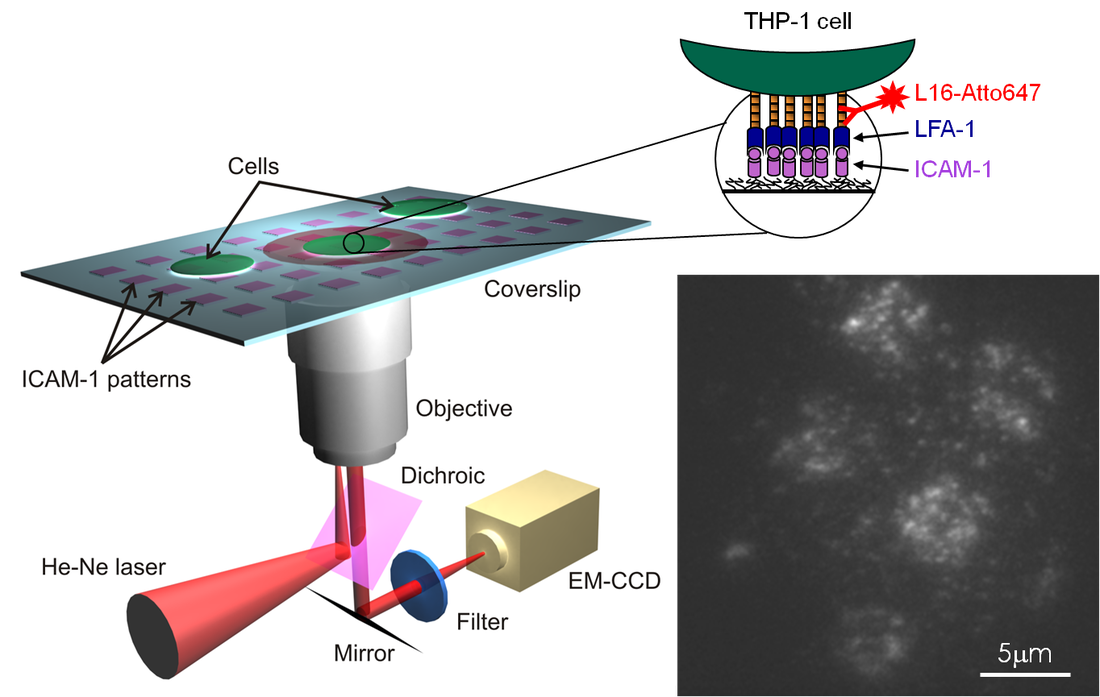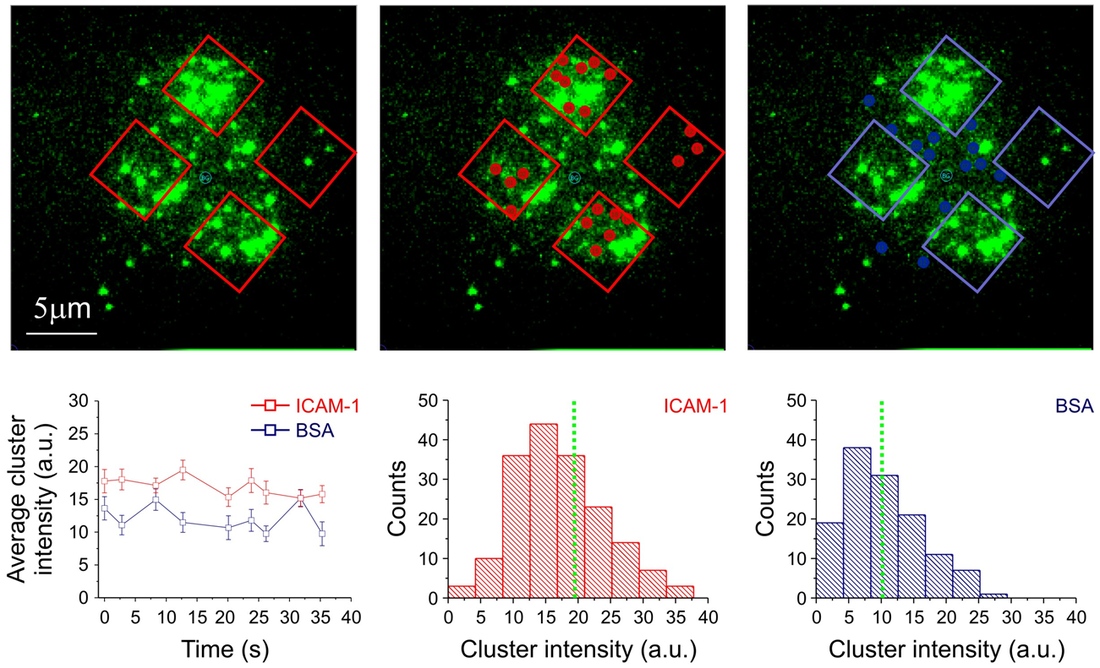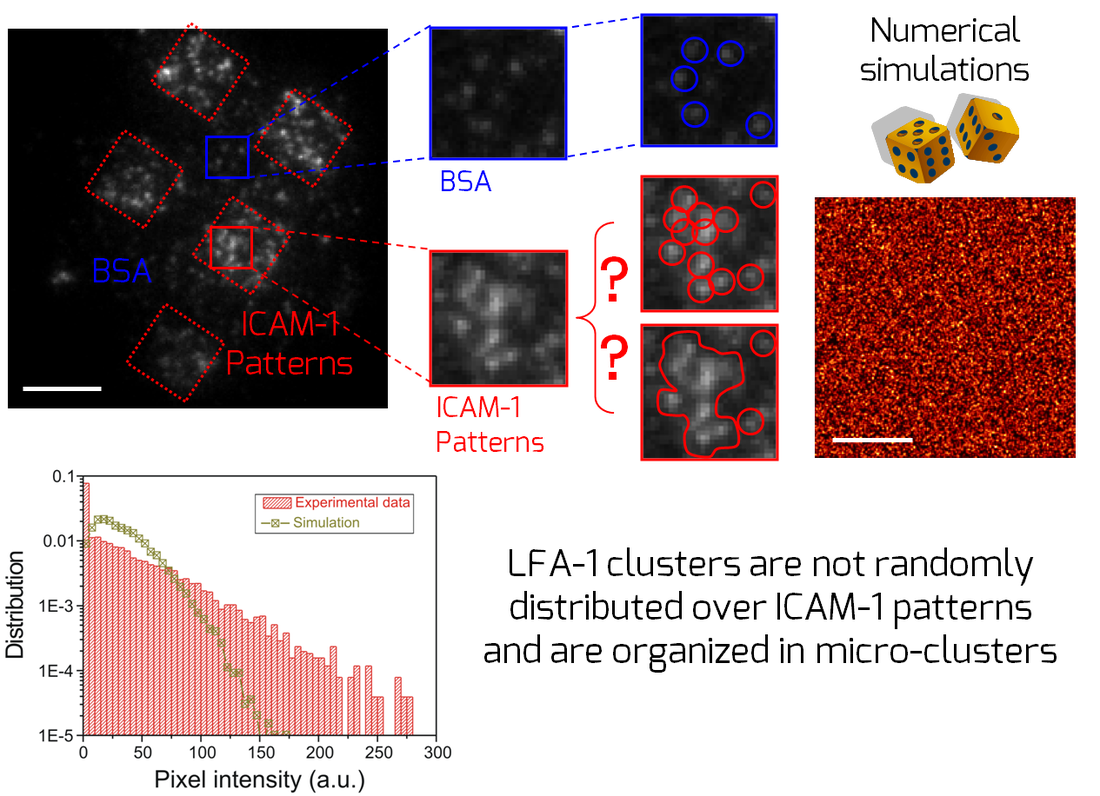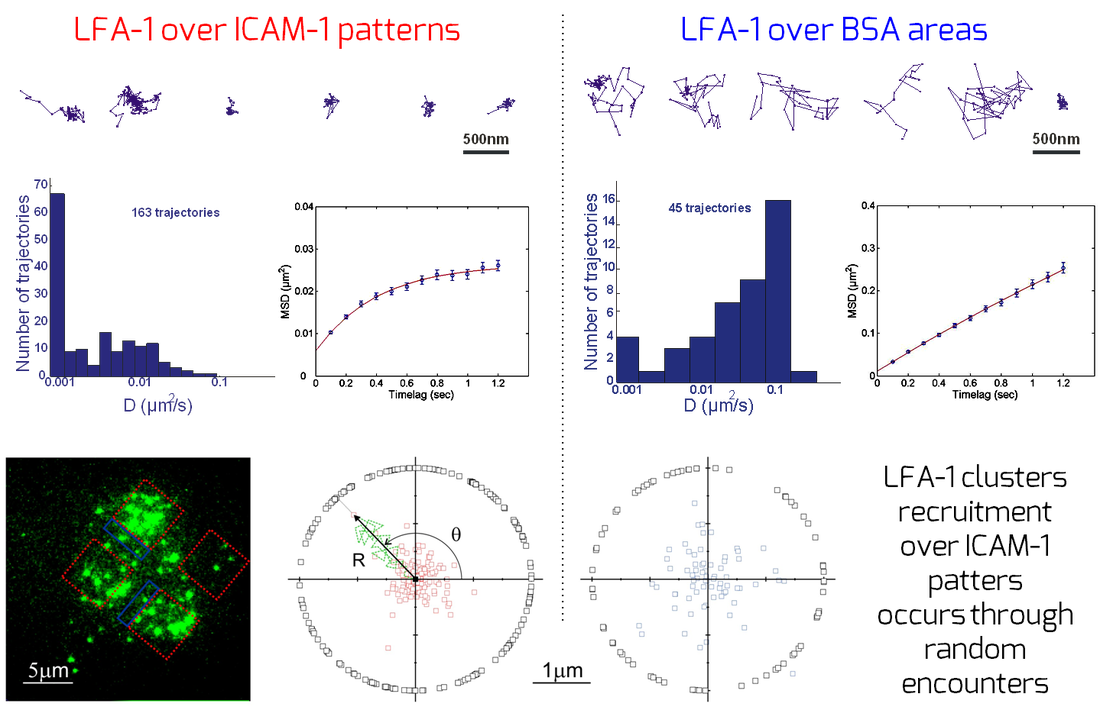Adhesion receptors dynamics on lymphocyte plasma membrane
In
2007, I joined the BioNanoPhotonics group at IBEC motivated in studying the
dynamics and the spatio-temporal organization of individual proteins in living
cells. During my research at IBEC, I focused my attention on the membrane
adhesion receptor LFA-1, which is involved in the formation and maintenance of
immunological synapses by tightly binding to its ligand (ICAM-1). In
particular, I employed live-cell time-lapse single-dye-tracing microscopy (and new trajectory analysis algorithms) to study the behavior of individual receptors I have shown that ligand-patterned
surfaces produce a dynamic re-organization of individual adhesion nano-clusters
of LFA-1 on the plasma membrane of human lymphocytes and that ligand-receptor
interactions occur via random encounters._
Related publications
Diez-Ahedo R., Normanno D., Esteban O., Bakker G.-J., Figdor C., Cambi A., and García-Parajo M., “Dynamic re-organization of individual adhesion nanoclusters in living cells by ligand-patterned surfaces”. Small 5, 11, 1258-1263 (2009)
People involved
Prof. Maria Garcia-Parajo (IBEC - Barcelona, ES)
Ruth Diez-Ahedo (IBEC - Barcelona, ES) Dr. Olga Esteban (IBEC - Barcelona, ES) Gert-Jan Bakker (IBEC - Barcelona, ES) Prof. Carl Figdor (NCMLS - Nijmegen, NL) Dr. Alessandra Cambi (NCMLS - Nijmegen, NL) Institutions & fundings
|
LFA-1 in the immunological cycle and ICAM-1 micro-patterns
TIRF imaging of LFA-1 nano-clusters in lymphocytes over ICAM-1 micro-patterns Diffraction-limited LFA-1 nano-clusters double their size over ICAM-1micro-patterns LFA-1 forms micro-clusters over ICAM-1 patterns LFA-1 mobility over the ICAM-1 patterns is greatly reduced and LFA-1 recruitment occurs via random encounters |

